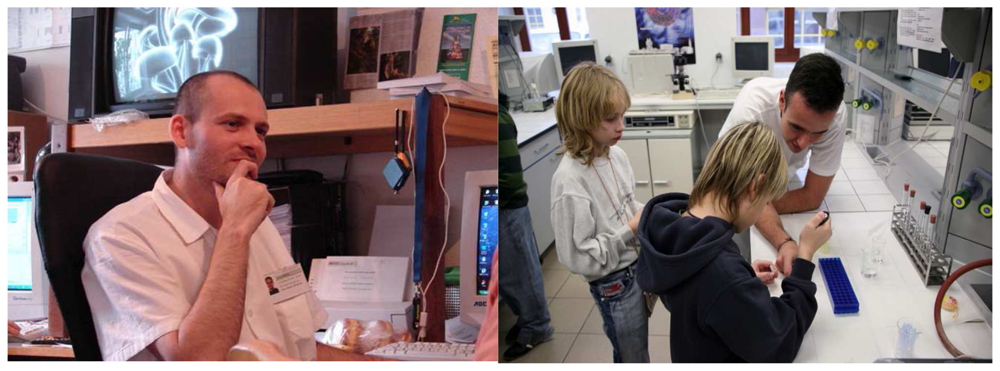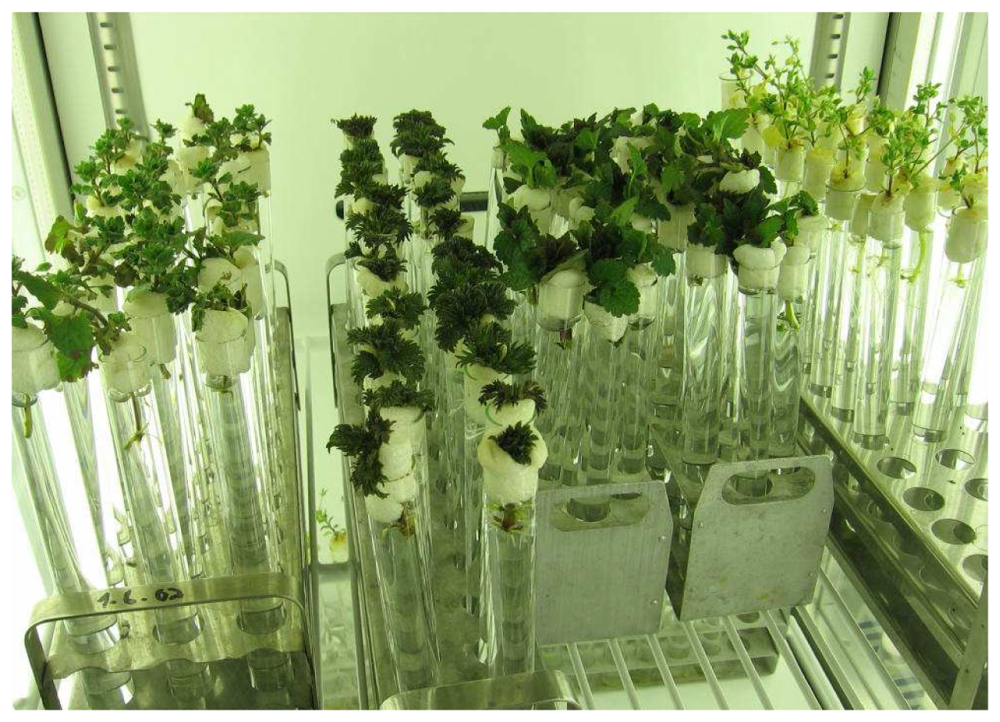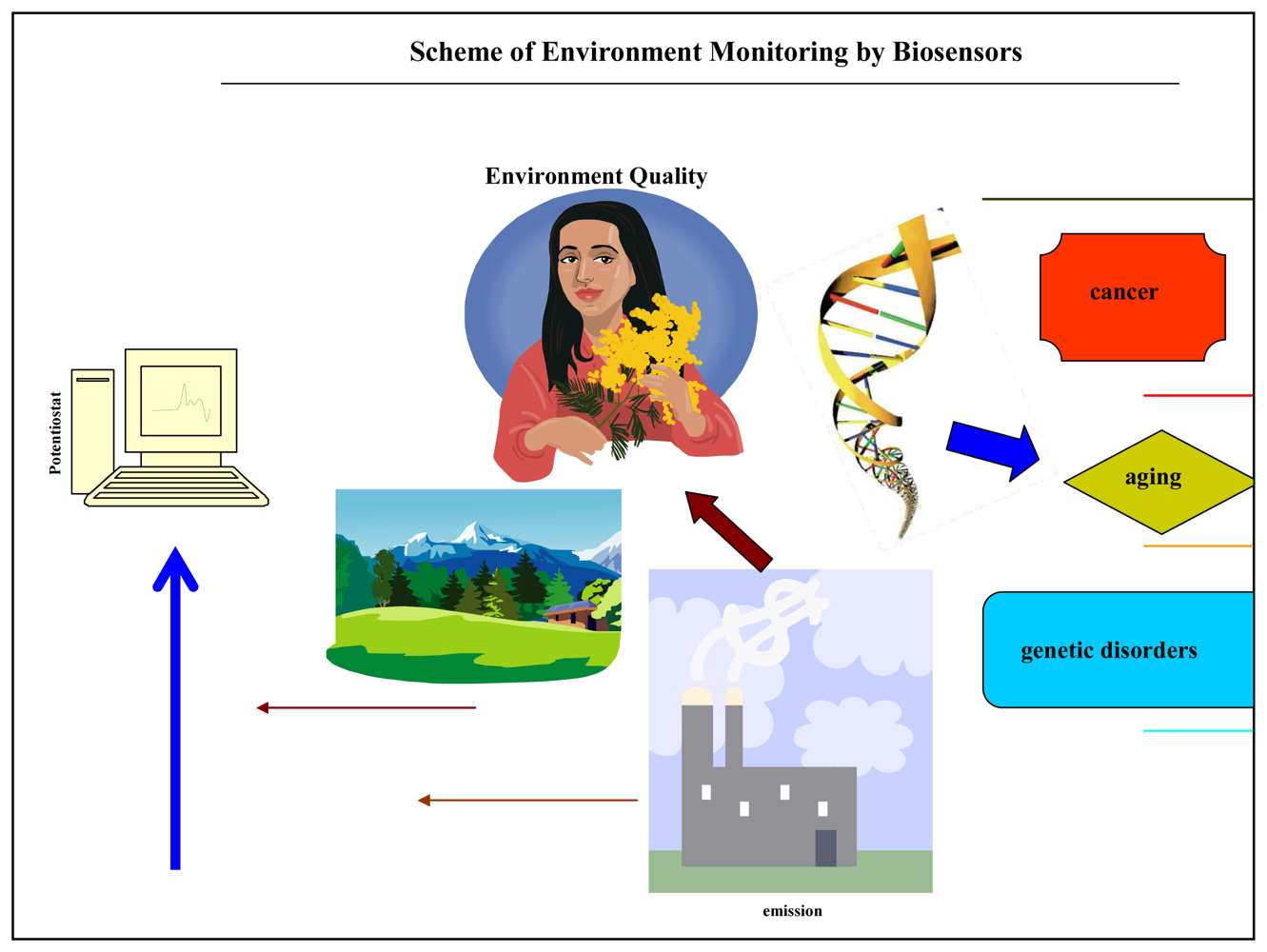Utilization of Electrochemical Sensors and Biosensors in Biochemistry and Molecular Biology
Abstract
:Could electrochemistry be employed in biochemistry and molecular biology in the 21st century?
Metallothionein
Is it a new possibility how we could diagnose a cancer?
Could electrochemistry really be utilized for cancer diagnostics in the 21st century?
Special issue “Utilization of Electrochemical Sensors and Biosensors in Biochemistry and Molecular Biology”
Acknowledgments

References
- Brdicka, R. Application of the polarographic effect of proteins in cancer diagnosis. Nature 1937, 139, 330–330. [Google Scholar]
- Brdicka, R. Polarographic investigations in serological cancer diagnosis. Nature 1937, 139, 1020–1021. [Google Scholar]
- Heyrovsky, J. Polarographic research in cancer. Nature 1938, 142, 317–319. [Google Scholar]
- Olafson, R.W.; Sim, R.G. Electrochemical approach to quantitation and characterization of metallothioneins. Anal. Biochem. 1979, 100, 343–351. [Google Scholar]
- Kizek, R.; Trnkova, L.; Palecek, E. Determination of metallothionein at the femtomole level by constant current stripping chronopotentiometry. Anal. Chem. 2001, 73, 4801–4807. [Google Scholar]
- Supalkova, V.; Huska, D.; Diopan, V.; Hanustiak, P.; Zitka, O.; Stejskal, K.; Baloun, J.; Pikula, J.; Havel, L.; Zehnalek, J.; Adam, V.; Trnkova, L.; Beklova, M.; Kizek, R. Electroanalysis of plant thiols. Sensors 2007, 7, 932–959. [Google Scholar]
- Supalkova, V.; Petrek, J.; Baloun, J.; Adam, V.; Bartusek, K.; Trnkova, L.; Beklova, M.; Diopan, V.; Havel, L.; Kizek, R. Multi-instrumental investigation of affecting of early somatic embryos of spruce by cadmium(II) and lead(II) ions. Sensors 2007, 7, 743–759. [Google Scholar]
- Adam, V.; Beklova, M.; Pikula, J.; Hubalek, J.; Trnkova, L.; Kizek, R. Shapes of differential pulse voltammograms and level of metallothionein at different animal species. Sensors 2007, 7, 2419–2429. [Google Scholar]
- Krizkova, S.; Ryant, P.; Krystofova, O.; Adam, V.; Galiova, M.; Beklova, M.; Babula, P.; Kaiser, J.; Novotny, K.; Novotny, J.; Liska, M.; Malina, R.; Zehnalek, J.; Hubalek, J.; Havel, L.; Kizek, R. Multi-instrumental analysis of tissues of sunflower plants treated with silver(I) ions - Plants as bioindicators of environmental pollution. Sensors 2008, 8, 445–463. [Google Scholar]
- Ryant, P.; Dolezelova, E.; Fabrik, I.; Baloun, J.; Adam, V.; Babula, P.; Kizek, R. Electrochemical determination of low molecular mass thiols content in potatoes (Solanum tuberosum) cultivated in the presence of various sulphur forms and infected by late blight (Phytophora infestans). Sensors 2008, 8, 3165–3182. [Google Scholar]
- Strlic, M.; Cigic, I.K.; Kolar, J.; de Bruin, G.; Pihlar, B. Non-destructive evaluation of historical paper based on pH estimation from VOC emissions. Sensors 2007, 7, 3136–3145. [Google Scholar]
- Vestergaard, M.; Kerman, K.; Tamiya, E. An overview of label-free electrochemical protein sensors. Sensors 2007, 7, 3442–3458. [Google Scholar]
- Hubalek, J.; Hradecky, J.; Adam, V.; Krystofova, O.; Huska, D.; Masarik, M.; Trnkova, L.; Horna, A.; Klosova, K.; Adamek, M.; Zehnalek, J.; Kizek, R. Spectrometric and voltammetric analysis of urease - nickel nanoelectrode as an electrochemical sensor. Sensors 2007, 7, 1238–1255. [Google Scholar]
- Hu, J.Q.; Wang, Z.P.; Li, J.H. Gold nanoparticles with special shapes: Controlled synthesis, surface-enhanced Raman scattering, and the application in biodetection. Sensors 2007, 7, 3299–3311. [Google Scholar]
- Yogeswaran, U.; Chen, S.M. A review on the electrochemical sensors and biosensors composed of nanowires as sensing material. Sensors 2008, 8, 290–313. [Google Scholar]
- Satoh, W.; Hosono, H.; Yokomaku, H.; Morimoto, K.; Upadhyay, S.; Suzuki, H. Integrated electrochemical analysis system with microfluidic and sensing functions. Sensors 2008, 8, 1111–1127. [Google Scholar]
- Wang, Y.; Xu, H.; Zhang, J.; Li, G. A Review of Electrochemical Sensors for Clinic Analysis. Sensors 2008, 8, 2043–2081. [Google Scholar]
- Adam, V.; Baloun, J.; Fabrik, I.; Trnkova, L.; Kizek, R. An electrochemical detection of metallothioneins in nanolitres at zeptomole level. Sensors 2008, 8, 2293–2305. [Google Scholar]
- Krizkova, S.; Fabrik, I.; Adam, V.; Kukacka, J.; Prusa, R.; Chavis, G.J.; Trnkova, L.; Strnadel, J.; Horak, V.; Kizek, R. Utilizing of adsorptive transfer stripping technique Brdicka reaction for determination of metallothioneins level in melanoma cells, blood serum and tissues. Sensors 2008, 8, 3106–3122. [Google Scholar]
- Zitka, O.; Huska, D.; Krizkova, S.; Adam, V.; Chavis, G.J.; Trnkova, L.; Horna, A.; Hubalek, J.; Kizek, R. An investigation of glutathione-platinum(II) interactions by means of the flow injection analysis using glassy carbon electrode. Sensors 2007, 7, 1256–1270. [Google Scholar]
- Adam, V.; Zitka, O.; Dolezal, P.; Zeman, L.; Horna, A.; Hubalek, J.; Sileny, J.; Krizkova, S.; Trnkova, L.; Kizek, R. Lactoferrin isolation using monolithic column coupled with spectrometric or micro-amperometric detector. Sensors 2008, 8, 464–487. [Google Scholar]
- Krizkova, S.; Beklova, M.; Pikula, J.; Adam, V.; Horna, A.; Kizek, R. Hazards of secondary bromadiolone intoxications evaluated using high-performance liquid chromatography with electrochemical detection. Sensors 2007, 7, 1271–1286. [Google Scholar]
- Pohanka, M.; Treml, F.; Hubalek, M.; Band'ouchova, H.; Beklova, M.; Pikula, J. Piezoelectric biosensor for a simple serological diagnosis of tularemia in infected European brown hares (Lepus europaeus). Sensors 2007, 7, 2825–2834. [Google Scholar]
- Havelkova, M.; Randak, T.; Zlabek, V.; Krijt, J.; Kroupova, H.; Pulkrabova, J.; Svobodova, Z. Biochemical markers for assessing aquatic contamination. Sensors 2007, 7, 2599–2611. [Google Scholar]
- Huska, D.; Krizkova, S.; Beklova, M.; Havel, L.; Zehnalek, J.; Diopan, V.; Adam, V.; Zeman, L.; Babula, P.; Kizek, R. Influence of cadmium(II) ions and brewery sludge on metallothionein level in earthworms (Eisenia fetida) - Biotransforming of toxic wastes. Sensors 2008, 8, 1039–1047. [Google Scholar]
- Havelkova, M.; Blahova, J.; Kroupova, H.; Randak, T.; Slatinska, I.; Leontovycova, D.; Grabic, R.; Pospisil, R.; Svobodova, Z. Biomarkers of contaminant exposure in Chub (Leuciscus cephalus L.) – a biomonitoring of major rivers in the Czech Republic. Sensors 2008, 8, 2589–2603. [Google Scholar]
- Cho, S.; Castellarnau, M.; Samitier, J.; Thielecke, H. Dependence of impedance of embedded single cells on cellular behaviour. Sensors 2008, 8, 1198–1211. [Google Scholar]
- Adam, V.; Mikelova, R.; Hubalek, J.; Hanustiak, P.; Beklova, M.; Hodek, P.; Horna, A.; Trnkova, L.; Stiborova, M.; Zeman, L.; Kizek, R. Utilizing of square wave voltammetry to detect flavonoids in the presence of human urine. Sensors 2007, 7, 2402–2418. [Google Scholar]
- Kumar, S.A.; Chen, S.M. Electroanalysis of NADH using conducting and redox active polymer/carbon nanotubes modified electrodes - A review. Sensors 2008, 8, 739–766. [Google Scholar]
- Belluzo, M.S.; Ribone, M.E.; Lagier, C.M. Assembling amperometric biosensors for clinical diagnostics. Sensors 2008, 8, 1366–1399. [Google Scholar]
- Grieshaber, D.; MacKenzie, R.; Voros, J.; Reimhult, E. Electrochemical biosensors - Sensor principles and architectures. Sensors 2008, 8, 1400–1458. [Google Scholar]
- Arvinte, A.; Rotariu, L.; Bala, C. Amperometric low-potential detection of malic acid using single-wall carbon nanotubes based electrodes. Sensors 2008, 8, 1497–1507. [Google Scholar]
- Huang, F.; Peng, Y.Y.; Jin, G.Y.; Zhang, S.; Kong, J.L. Sensitive detection of haloperidol and hydroxyzine at multi-walled carbon nanotubes-modified glassy carbon electrodes. Sensors 2008, 8, 1879–1889. [Google Scholar]
- Ming, L.; Xi, X.; Chen, T.T.; Liu, J. Electrochemical determination of trace Sudan I contamination in chili powder at carbon nanotube modified electrodes. Sensors 2008, 8, 1890–1900. [Google Scholar]
- Mavrikou, S.; Flampouri, K.; Moschopoulou, G.; Mangana, O.; Michaelides, A.; Kintzios, S. Assessment of Organophosphate and Carbamate Pesticide Residues in Cigarette Tobacco with a Novel Cell Biosensor. Sensors 2008, 8, 2818–2832. [Google Scholar]
- Pan, D.; Zuo, X.L.; Wan, Y.; Wang, L.H.; Zhang, J.; Song, S.P.; Fan, C.H. Electrochemical interrogation of interactions between surface-confined DNA and methylene blue. Sensors 2007, 7, 2671–2680. [Google Scholar]
- Horakova-Brazdilova, P.; Fojtova, M.; Vytras, K.; Fojta, M. Enzyme-linked electrochemical detection of PCR-amplified nucleotide sequences using disposable screen-printed sensors. Applications in gene expression monitoring. Sensors 2008, 8, 193–210. [Google Scholar]
- Hwang, E.T.; Ahn, J.M.; Kim, B.C.; Gu, M.B. Construction of a nrdA :: luxCDABE fusion and its use in Escherichia coli as a DNA damage biosensor. Sensors 2008, 8, 1297–1307. [Google Scholar]
- de Abreu, F.C.; de Paula, F.S.; Ferreira, D.C.M.; Nascimento, V.B.; Santos, A.M.C.; Santoro, M.M.; Salas, C.E.; Lopes, J.C.D.; Goulart, M.O.F. The application of DNA-biosensors and differential scanning calorimetry to the study of the DNA-binding agent berenil. Sensors 2008, 8, 1519–1538. [Google Scholar]
- Trnkova, L.; Zerzankova, L.; Dycka, F.; Mikelova, R.; Jelen, F. Study of copper and purine-copper complexes on modified carbon electrodes by cyclic and elimination voltammetry. Sensors 2008, 8, 429–444. [Google Scholar]


© 2008 by the authors; licensee Molecular Diversity Preservation International, Basel, Switzerland. This article is an open access article distributed under the terms and conditions of the Creative Commons Attribution license (http://creativecommons.org/licenses/by/3.0/).
Share and Cite
Adam, V.; Kizek, R. Utilization of Electrochemical Sensors and Biosensors in Biochemistry and Molecular Biology. Sensors 2008, 8, 6125-6131. https://doi.org/10.3390/s8106125
Adam V, Kizek R. Utilization of Electrochemical Sensors and Biosensors in Biochemistry and Molecular Biology. Sensors. 2008; 8(10):6125-6131. https://doi.org/10.3390/s8106125
Chicago/Turabian StyleAdam, Vojtech, and Rene Kizek. 2008. "Utilization of Electrochemical Sensors and Biosensors in Biochemistry and Molecular Biology" Sensors 8, no. 10: 6125-6131. https://doi.org/10.3390/s8106125



